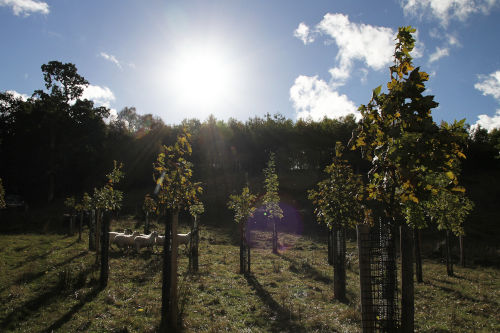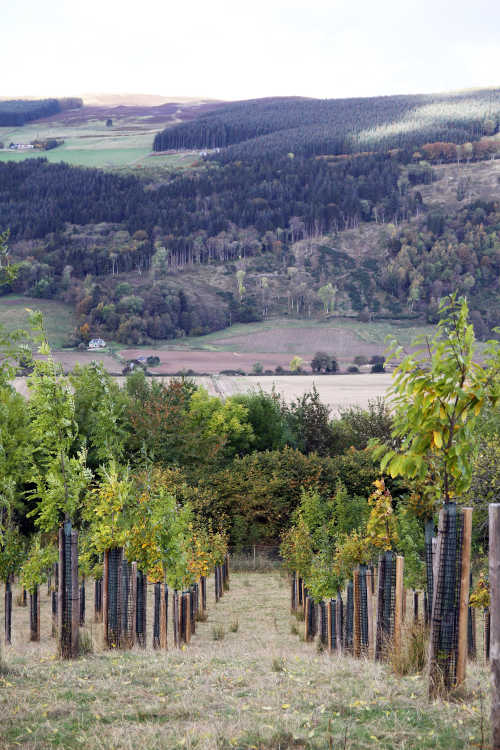Global Reforestation and Right Livelihood in Northern England
By Rob Squires
Last year the Guardian covered a report proposing the planting of one trillion trees over the next 50-100 years, to mop up two-thirds of global carbon emissions. The Global Tree Restoration Potential excludes arable and urban areas from its calculations, but includes grazing land, on which the researchers say trees can benefit sheep and cattle. As the most effective projects cost as little as 30 US cents a tree, the total price could be £240bn.
This may sound like a lot of money, but in the 10 years following the 2009 banking crises, the Bank of England created £445bn of new money, in a process termed ‘quantitative easing’. Knowing this puts the situation into sharp context - if the banks are “too big to fail”, such that £445bn can be whipped up using the government’s “magic money tree”, then surely the planet is big enough to merit a mere £240bn to put the brakes on the climate crisis? What is more, this would be £240bn globally, so the UK’s share of this would be small compared with the bill for bailing out the bankers.
I got to thinking about the one trillion trees and what it will take for the UK to play its part in this, and the impact that it will have. I was prompted to do some back-of-an-envelope number crunching. Let us assume 2 billion trees will need planting nationwide for us to achieve our share of one trillion. Using the same planting densities as the report, this will require around 2.85 million hectares (ha). The total area of the UK is actually around 24.85 million hectares, so on that basis an extra 11.5% of the country needs to become wooded.
The agricultural area of the UK is 9.34 million ha and around 60% of this is grassland or rough grazing. So if half of the 2 billion new trees required for the UK were planted on grazing land, such as the sparse uplands of Northern England, it would require a conversion of around 25% of the land currently used for sheep and cattle, over to new woodland.
If planting 2 billion trees sounds like a tall order, consider that last year Ethiopia broke a world record by planting an incredible 350m trees in just one day! Their plan is to plant four billion to counter deforestation, and climate change. The surface area of Ethiopia is actually about 5 times bigger than the UK, and the population density is a lot less, which makes their target seem much easier. On the other hand the historic impact of the UK on the environment, and the climate in particular is very high, and it could be argued that it is our duty to enact drastic land use changes to this effect.
Tree planting on such a scale will have a dramatic impact, both on the natural world and on the livelihoods of farmers and smallholders. For the environment the benefits of reforestation are obvious, providing habitat, increased biodiversity and ecological resilience. The challenge however, is to develop ways in which the rural economy can adapt to such changes, protecting food security and ensuring financial benefits. Help is at hand however, and the Soil Association’s Agroforestry Handbook explains the potential of different types of tree farming systems, with advice on implementation, case studies, and market opportunities. The economic case for agroforestry can be considered in three main ways: enhanced ecosystem services; enhanced agricultural outputs; and direct tree outputs.
 |
| Agroforestry in Scotland |
 |
Woodland conversion is a big risk though, and without a lot of motivation it is unlikely that many land owners will switch over from grazing to agroforestry systems. Relevant to ‘enhanced ecosystem services’ is the Welsh Government’s recently conducted Sustainable Farming and our Land consultation exploring options for supporting farmers post Brexit. The Sustainable Farming Scheme proposes to reward farmers with subsidies for environmental outcomes, such as biodiversity, air quality, and water quality, all of which tree planting can contribute to. Since until recently an average of 80% of Welsh farmers' income came from the direct payments they received through the EU's Common Agricultural Policy, the new environmental rewards could be crucial to prevent many farmers from going out of business in the near future.
It is still far from certain however, if the Scheme will be implemented, and even if it is, it only covers a part of the UK. Also, considering that the UK has still not recovered properly from 2011 banking crises, combined with the ever cumulating impact of Covid-19, it is difficult to see where the cash would come from to support a subsidy such as this in the long run.
Fortunately the Woodland Carbon Code (WCC) is a scheme that is already up and running in the UK. This is a national standard, and it is a way for land owners to diversify and earn cash from converting some (or all) of their land into woodland. A WCC verified woodland project is able to sell the carbon that it's trees capture as they grow, and the carbon is sold to individuals and business in order that they can offset the carbon that they produce either through their business activities, or their lifestyles. Carbon offsetting is an expanding market, and the price of carbon is set to rise sharply over the next 30 years, as climate change continues to be a problem. I've done the maths, and it seems the likely income from a WCC accredited woodland is likely to be on a par with the income that farmers currently get from grazing sheep and cattle.
In light of all the above, I have set up a new business called Treegeneration with the basic aim of supporting land owners to create new woodlands, and earn cash under the Woodland Carbon Code. The project is still early days, and the web site is under development, but I have provided a page on how much income a woodland can potentially generate over a 100 year period.
Treegeneration's offer to land-owners is threefold:
- To project manage new woodland developments in partnership with land owners, in order to get them verified with the WCC;
- To raise the cash for planting trees
- To sell the carbon that the trees produce on the carbon market on behalf of the owner.
There is still loads to do, but I am reaching out to land owners, with a view to getting my first woodland development initiative under way, and I think that the Northern Permaculture network is a great starting point. In the long run, I would like to be talking to conventional upland farmers and supporting them to convert (say) 20% of their land to woodland, but I feel that this is still a way in the future. As Bill Mollison once said though, "I'm not in the convincing business .. instead, it is best to concentrate on the doors that are open."
So if you are a landowner, or know of one, who is interested in the idea of creating new woodland, I would be very happy to talk to you about how Treegeneration can help. The UK Woodland Carbon Code has much potential to support sustainable livelihoods, whilst combating climate change and enhancing biodiversity. For more information visit the Treegeneration web site at or email me here.
 |
| Agroforestry (main species silvopastoral system) at Bolfracks Estate, Upper Farrochil, by Aberfeldy |
 |
Rob would like to thank Jane Powell for her original article on this topic